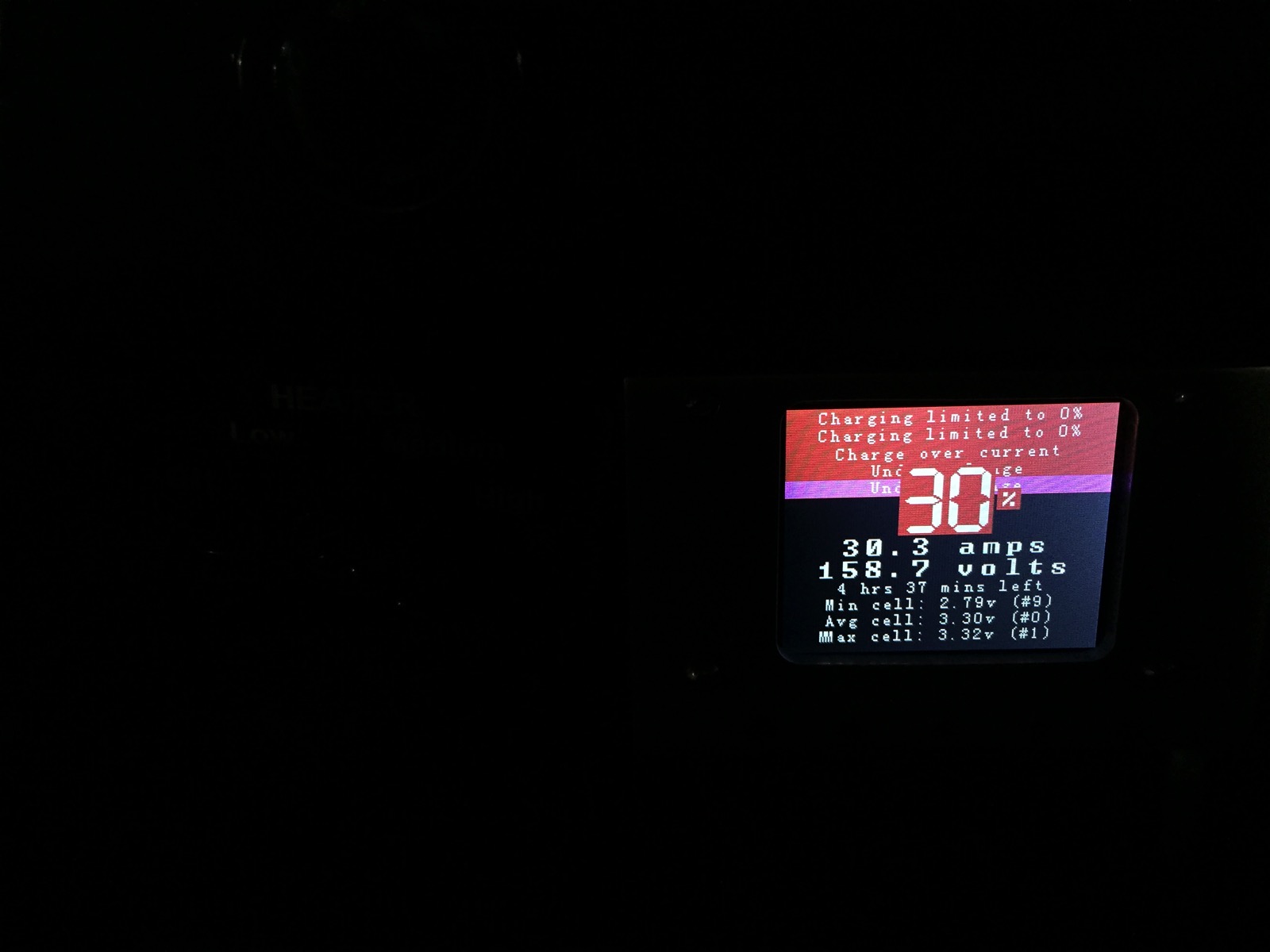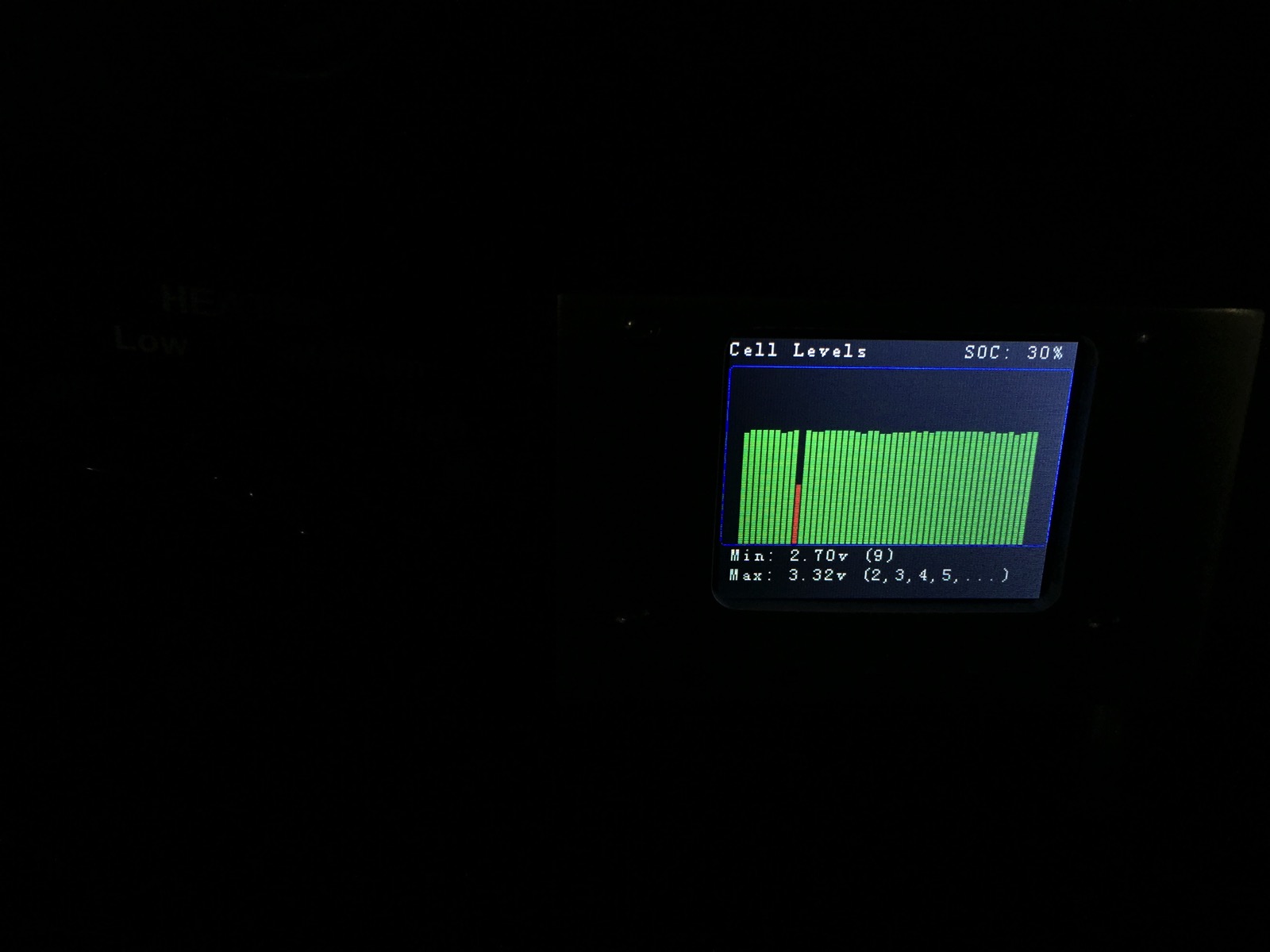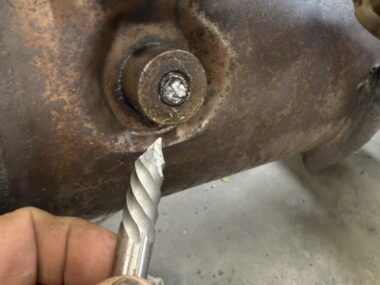Plug Bug: You are only as strong as your weakest cell
I had known for quite some time that I had a weak cell in my battery pack. My electric bug’s battery consists of 48 lithium iron phosphate cells. I use the eLithion battery management system with a custom display I fabricated along with some custom ardiuno code to show cell info from the CAN bus. I would routinely see one cell (number 9) sag heavily under load.
One day I left work work (a 20 mile drive) with my pack at about 50% charged. At about five miles from work my low battery warning buzzer went off telling me that I had one cell that was fully discharged. That was my bad cell number 9, and I was only at 30% SOC once I arrived at work:

The cell was down to 2.07v, which is well below the nominal 3.20 volts, and the “fully discharged” value of 2.7 volts. I had ignored the low voltage buzzer, and continued to drive car, taking more energy out and over-discharging it. I knew this might destroy the cell, but I was okay with that as I had a spare cell at home.
Once I got to work, the BMS wouldn’t let it charge! It thought the under voltage condition was an error where it shouldn’t let any energy in (which is strange). Luckily, I could easily unplug the BMS connection to my charger, and let it charge for a bit:

This pulled the voltage up to 2.70 volts, and let it normally charge:

At this point, I knew that 30% state of charge (SOC) was my real world “battery empty” point. This one particular cell has lost 30% capacity in the 4+ years and 39,000 miles that I have been driven the car. I know the other cells aren’t as bad, as they don’t sag under voltage load, but this one bad cell is the limiting factor of my pack. If I continued to discharge it below 30%, it would cause the cell to die. That in itself wouldn’t be that bad, but I heard dead cells can sometimes reverse the voltage and suck energy out of their neighbors. I would also have to bypass it in my BMS, as it wouldn’t let the car drive with a dead cell.
I continued to drive the car for a month or so, and just didn’t let it get that low again, and it worked fine. But I really wanted that extra bit of range and capacity “just in case”. Plus, I had two spare good cells for this very reason.
Last weekend I finally did the work to replace the cell. I had previously used a volt meter to find out which cell it was (the numbering doesn’t seem to be related to anything I can figure out). It was a cell in the front trunk of my car, so I pulled out the module for it:

I snapped the green strapping wires apart, replaced the bad cell, and then strapped the module back together.
This time, I used my engine hoist to pull the module out and put it back in:

It was so much easier than trying to pull it out by hand (which I had done when I originally installed the modules!).
The bug now has a bit over 39,100 miles. The transmission is leaking a bit of oil from the main shaft seal; I’m afraid it will eventually fail again.
Now, I need to do another capacity test with the pack and see how the other cells are doing. 30% loss over roughly 4.5 years isn’t that great…the cells forecast an expected 20% loss after 10 years of use when discharging to more than 20% SOC. I always did this, but I also always charged to 100% SOC (indicated by roughly 3.6 volts per cell). I think always charging to 100% has reduced the capacity. If I were to do the project again, I would write some smarter charger controlling logic to limit max SOC to 90 to 95% for most charging sessions, and only charge to 100% on the days I knew I would really need it, or would use the energy right away. Sitting at a high SOC for a long time isn’t good for the cells.



